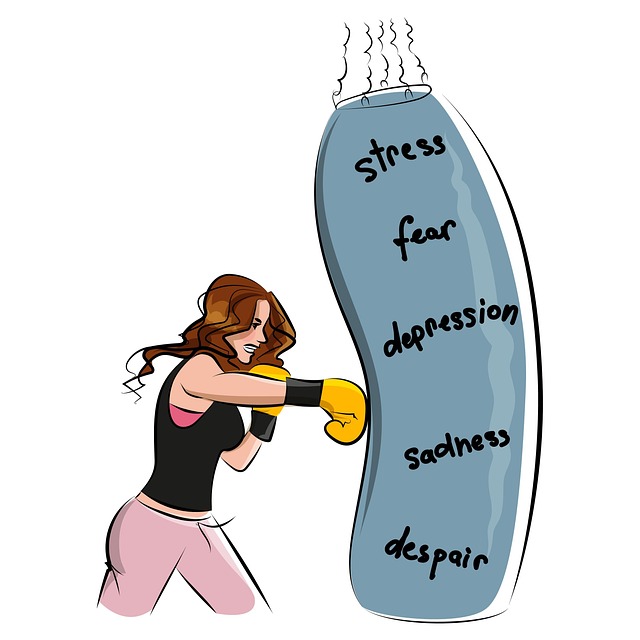Evaluating mental wellness programs requires a blend of quantitative and qualitative methods, combining statistical data analysis with in-depth interviews and case studies. For instance, Castle Rock Cancer Issues Therapy could track anxiety and depression reductions using validated scales, while Compassion Cultivation Practices might reveal powerful healing narratives. Integrating both data types offers a comprehensive evaluation, shaping Mental Health Policy Analysis and Depression Prevention strategies. Engaging stakeholders, including participants and the community, is crucial for tailoring programs to unique needs, fostering effective holistic healing. Long-term evaluation methods assess not just immediate outcomes but also the sustainability of acquired skills, ensuring positive impacts on mental wellness journeys over time, as exemplified by Castle Rock's patient recovery approach.
Mental wellness program evaluations are essential for understanding their effectiveness. This article explores diverse methods, drawing inspiration from Castle Rock Cancer Issues Therapy, a model program that emphasizes long-term success. We delve into assessing program impact through both quantitative and qualitative means, highlighting stakeholder involvement strategies, and presenting sustainable evaluation frameworks. By examining these approaches, mental health practitioners can enhance service delivery and measure the true reach of wellness initiatives.
- Assessing Program Impact: Quantitative and Qualitative Approaches
- Stakeholder Involvement: Engaging Participants and Community
- Measuring Success: Long-term Evaluation Strategies for Mental Wellness Programs Inspired by Castle Rock Cancer Issues Therapy
Assessing Program Impact: Quantitative and Qualitative Approaches

Evaluating the impact of mental wellness programs is a multifaceted process, offering both quantitative and qualitative insights. Quantitative methods involve statistical analysis of data, such as surveys distributed to participants before and after the program. This approach measures changes in symptoms, satisfaction levels, and other quantifiable outcomes. For instance, Castle Rock Cancer Issues Therapy might track reductions in anxiety or depression scores using validated scales, providing a clear picture of the program’s effectiveness on a large scale.
Qualitatively, methods like interviews, focus groups, and case studies offer deeper understanding. Participants can share personal stories of transformation, highlighting specific practices that resonated with them. Compassion Cultivation Practices, for example, may evoke powerful narratives of healing and connection. Integrating these qualitative data enriches the evaluation, revealing nuanced benefits beyond numerical metrics, which are especially relevant in Mental Health Policy Analysis and Advocacy efforts to improve Depression Prevention strategies.
Stakeholder Involvement: Engaging Participants and Community

Engaging stakeholders is a pivotal aspect of evaluating mental wellness programs, especially when focusing on holistic healing approaches like those offered by Castle Rock Cancer Issues Therapy. Active participation from program participants and the wider community can significantly enhance the effectiveness and impact of such initiatives. This involvement ensures that the program aligns with the unique needs and experiences of those it serves. By fostering open communication and feedback, therapists and organizers can develop tailored strategies, incorporating effective positive thinking and communication strategies.
Encouraging community engagement creates a supportive network around participants, facilitating their emotional healing processes. This collaborative approach may involve organizing focus groups, workshops, or surveys to gather insights on the program’s success and areas for improvement. Such active involvement not only empowers individuals but also contributes to a more sustainable and culturally sensitive mental wellness program that resonates with the community it serves.
Measuring Success: Long-term Evaluation Strategies for Mental Wellness Programs Inspired by Castle Rock Cancer Issues Therapy

Measuring success in mental wellness programs is a multifaceted process, and long-term evaluation strategies are essential to understanding their impact and effectiveness, much like Castle Rock Cancer Issues Therapy’s approach to patient recovery. Beyond immediate outcomes, these strategies delve into the sustainability and transferability of skills acquired through programs, akin to coaching individuals to maintain healthy habits after therapy sessions.
By incorporating self-care practices and mental wellness coaching programs development, evaluations can assess participants’ ability to integrate newfound coping mechanisms into their daily lives. Similar to Castle Rock’s holistic treatment model, this involves tracking improvements in mental health literacy, resilience, and overall well-being over extended periods. Long-term evaluation methods not only ensure the programs’ immediate benefits but also contribute to their refinement and improvement, fostering a more sustainable and positive impact on participants’ mental wellness journeys.
Evaluating mental wellness programs is a multifaceted process, as demonstrated by successful models like Castle Rock Cancer Issues Therapy. By combining quantitative data analysis with qualitative insights from stakeholders, we can gain a holistic understanding of program impact. Engaging participants and communities in the evaluation ensures that outcomes are aligned with real-world needs. Adopting long-term evaluation strategies enables continuous improvement, ensuring mental wellness programs remain effective and responsive to evolving challenges. These methods collectively foster robust assessments, ultimately enhancing the overall well-being of those seeking support.










